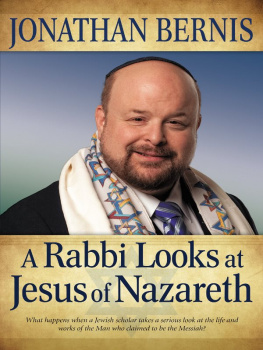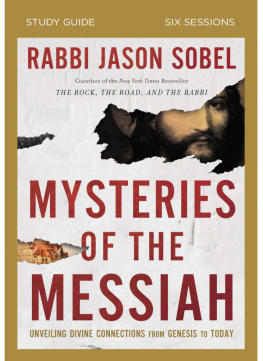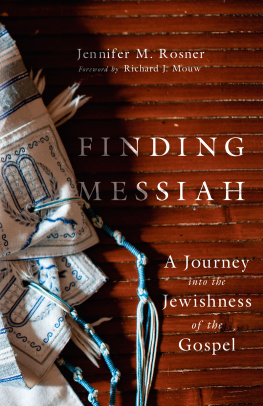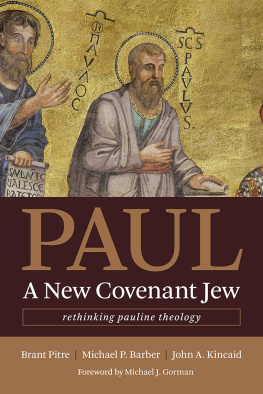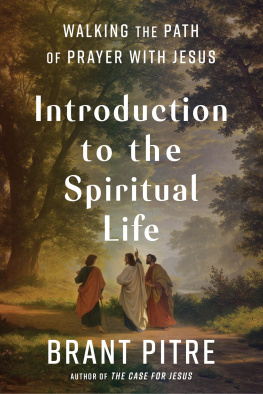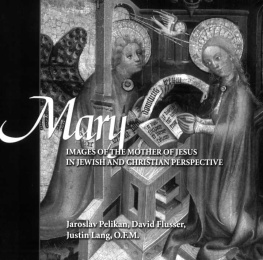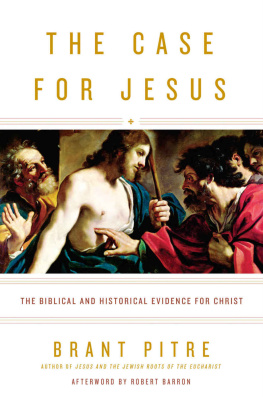Brant James Pitre - Jesus and the Jewish Roots of Mary: Unveiling the Mother of the Messiah
Here you can read online Brant James Pitre - Jesus and the Jewish Roots of Mary: Unveiling the Mother of the Messiah full text of the book (entire story) in english for free. Download pdf and epub, get meaning, cover and reviews about this ebook. year: 2018, publisher: Image, genre: History. Description of the work, (preface) as well as reviews are available. Best literature library LitArk.com created for fans of good reading and offers a wide selection of genres:
Romance novel
Science fiction
Adventure
Detective
Science
History
Home and family
Prose
Art
Politics
Computer
Non-fiction
Religion
Business
Children
Humor
Choose a favorite category and find really read worthwhile books. Enjoy immersion in the world of imagination, feel the emotions of the characters or learn something new for yourself, make an fascinating discovery.
- Book:Jesus and the Jewish Roots of Mary: Unveiling the Mother of the Messiah
- Author:
- Publisher:Image
- Genre:
- Year:2018
- Rating:5 / 5
- Favourites:Add to favourites
- Your mark:
- 100
- 1
- 2
- 3
- 4
- 5
Jesus and the Jewish Roots of Mary: Unveiling the Mother of the Messiah: summary, description and annotation
We offer to read an annotation, description, summary or preface (depends on what the author of the book "Jesus and the Jewish Roots of Mary: Unveiling the Mother of the Messiah" wrote himself). If you haven't found the necessary information about the book — write in the comments, we will try to find it.
Jesus and the Jewish Roots of Mary: Unveiling the Mother of the Messiah — read online for free the complete book (whole text) full work
Below is the text of the book, divided by pages. System saving the place of the last page read, allows you to conveniently read the book "Jesus and the Jewish Roots of Mary: Unveiling the Mother of the Messiah" online for free, without having to search again every time where you left off. Put a bookmark, and you can go to the page where you finished reading at any time.
Font size:
Interval:
Bookmark:

For years, Ive wanted to write a book on the Jewish roots of Mary, but I never felt like I was ready. I kept putting it off, until my dear friend Sr. Julia Darrenkamp, F.S.P., finally twisted my armI mean, encouraged meto just do it. So first thanks must go to Sr. Julia, without whom this book would not exist. Thank you especially for your prayers, and for being my sister.
Next in line is my amazing editor at Image Books, Gary Jansen. Words cannot express how much your friendship, support, and guidance over the course of this project have meant to me. Thanks for using your many talents to help me be a better writer. I also want to offer a heartfelt thank-you to all of my friends and colleagues who read and critiqued various drafts of the book: Michael Barber, Todd Russell, Jimmy Seghers, John Sehorn, Edward Sri, and Matt Ziifle. Im grateful to Jennifer Ely for her positive feedback and for formatting the charts! Im indebted to Mario Sacasa for patiently listening to me rattle on about Mary and for the breakthrough insight I needed to finish one particularly difficult chapter. I especially want to thank Kevin Redmann, whose truly amazing gift for languages ancient and modern caught countless mistakes I had made. Kevin, you have made this an incalculably better book. As always, Im grateful to any and all of my friendsclergy, religious, and laitywho have prayed for me and supported me in various ways while I was writing this book, especially Carol and Herb Younger.
In closing, I want to thank my mother, who first introduced me to Jesus and to his mother. My image of Mary will always be shaped by you. Then, of course, there is my beautiful wife, Elizabeth, and our children: Morgen, Aidan, Hannah, Marybeth, and Lillia. Elizabeth, you alone know the sacrifices and suffering that went into the writing of this particular book. May they be for the greater glory of God. In a special way, this book is dedicated to Aidan, my son. May you always listen to the last words Mary speaks in the Gospel: Do whatever he tells you (John 2:5).
MAY 21, 2018
MEMORIAL OF MARY, MOTHER OF THE CHURCH

In order to situate the words and deeds of Jesus in their historical context, we need to be familiar with two important sources of information: (1) the Jewish Scriptures, commonly known as the Old Testament, and (2) ancient Jewish tradition, enshrined in a host of writings not contained in the Hebrew Bible and often not familiar to non-Jewish readers who are not already specialists in biblical studies.
For this reason, it is helpful to briefly identify the various collections of Jewish writings outside the Bible that I refer to from time to time in this book. I cannot overemphasize that I am not suggesting that Jesus himself (or even the writers of the New Testament) would have read any of these works, some of which were compiled long after his earthly life. What I am suggesting is that many of these writings bear witness to ancient Jewish traditions outside the Bible that may have circulated at the time of Jesus. In particular, there are Jewish phrases, customs, practices, and beliefs reflected in both the New Testament and these extrabiblical Jewish writings.
In light of this situation, contemporary scholars such as Dale Allison, Craig Evans, Amy-Jill Levine, Craig Keener, John Meier, E. P. Sanders, Geza Vermes, and many others make abundant use of extrabiblical Jewish sources in their study of the New Testament. For a recent example, see especially The Jewish Annotated New Testament (2nd ed.; eds. Amy-Jill Levine and Marc Zvi Brettler; Oxford: Oxford University Press, 2017). In this volume, an international team of Jewish scholars utilizes both Jewish Scripture and extrabiblical writings, including rabbinic literature, to shed light on the meaning of the New Testament.
With this in mind, after the Bible itself, the most important Jewish sources utilized by contemporary scholars are the following:
The Dead Sea Scrolls: an ancient collection of Jewish manuscripts copied sometime between the second century B.C . and 70 A.D . This collection contains numerous writings from the Second Temple Period, during which Jesus lived.
The Old Testament Pseudepigrapha: a vast array of writings that are often attributed to ancient authors such as Enoch, Ezra, Baruch, and others. They span the centuries before and after the time of Jesus (from the second century B.C . through the fourth century A.D .). Many of these works, such as 1 Enoch, Jubilees, 4 Ezra, and 2 Baruch, give key insights into Judaism at the time of Jesus.
The Works of Josephus: the writings of a Jewish historian and Pharisee who lived in the first century A.D . His works are extremely important witnesses to Jewish history and culture at the time of Jesus and the early Church.
The Mishnah and Tosefta: two extensive collections of the oral traditions of Jewish rabbis who lived from about 50 B.C . to A.D . 200. Most of the traditions are focused on legal and liturgical matters. For rabbinic Judaism, after the Bible, the Mishnah remains the most authoritative witness to Jewish tradition.
The Targums: ancient Jewish translations and paraphrases of books of the Jewish Scriptures from Hebrew into Aramaic. The Targums emerged sometime after the Babylonian exile (587 B.C .), when many Jews began speaking Aramaic instead of Hebrew. Scholars disagree about their exact dates, which are very difficult to determine.
The Babylonian Talmud: a vast compilationmore than thirty massive volumesof the traditions of Jewish rabbis who lived from around A.D . 220 to 500. The Talmud consists of both legal opinions and biblical interpretation, in the form of an extensive commentary on the Mishnah.
The Midrash Rabbah: These texts are ancient Jewish commentaries on various books of the Bible. Although parts of these are later than the Talmud, they contain many interpretations of Scripture attributed to rabbis who lived during the times of the Mishnah and the Talmud.
These are by no means all of the ancient Jewish writings scholars use to understand the New Testament, but they are the ones I have engaged from time to time in this book.
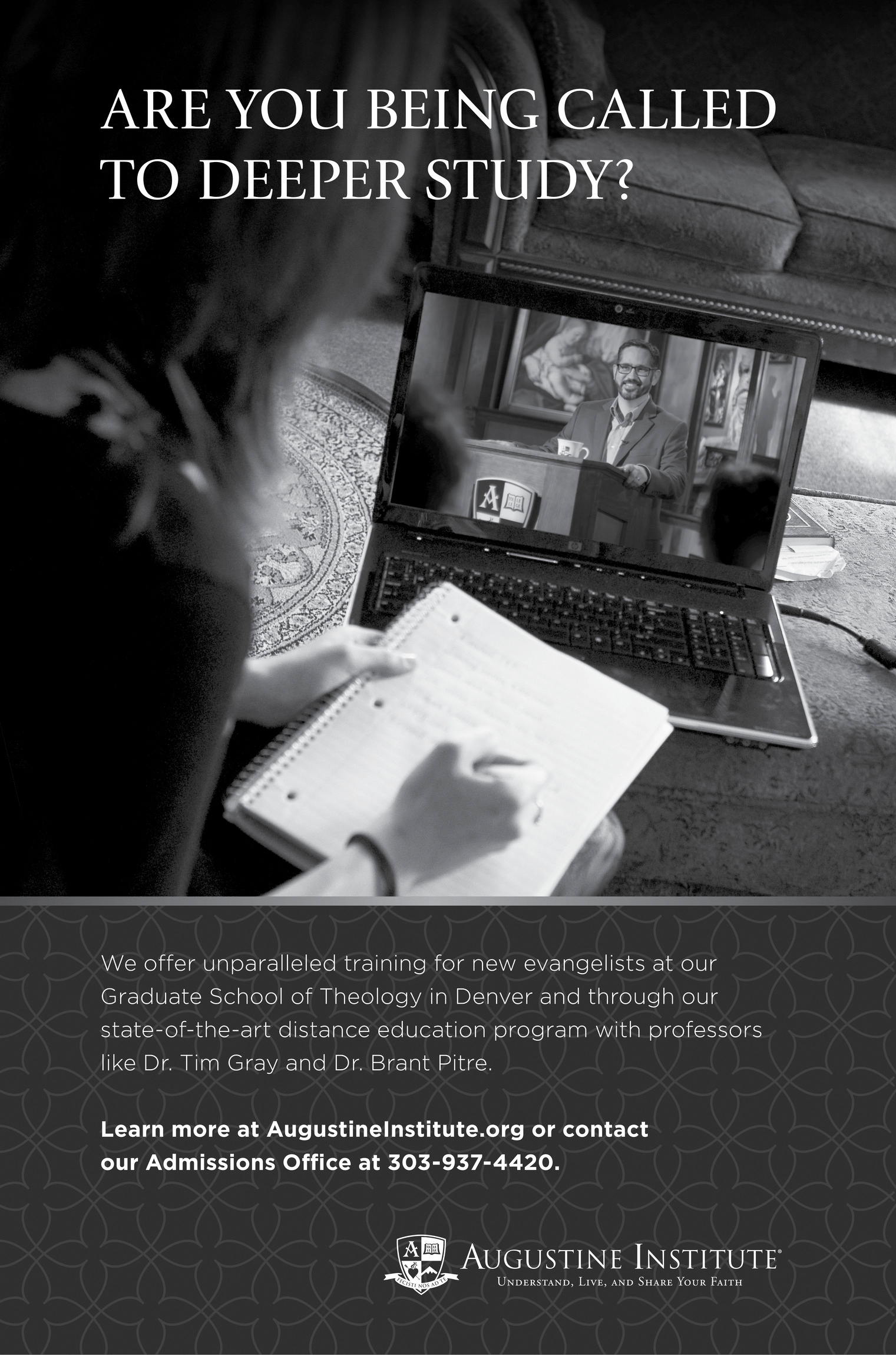

This book is written for anyone who has ever wondered what the Bible really teaches about Mary, the mother of Jesus. In particular, it is written for those who have been puzzled by, struggled with, or rejected Catholic beliefs about Mary as unbiblicalif not idolatrous. I should know. I was one of them. Heres how the story goes
When I was growing up, I had no problem believing what the Catholic Church teaches about Mary. I was born into a Catholic family, baptized as an infant, and raised in predominantly Catholic South Louisiana. Every Sunday, I attended a Catholic church that had several statues of Mary. On special occasions, I lit a candle and would ask Mary to pray for me. One of my earliest memories is of my mother taking my brothers and me to pray the Rosary with my grandmother and great-grandmother. While the women prayed, we boys would sit on the floor playing and listening andif memory servesgetting pretty bored. However, by the time I was seven or eight years old, my older brother and I had picked up the practice for ourselves. Believe it or not, we boys used to kneel beside our beds at night for thirty to forty minutes while we read the Bible verses and said the prayers in a little book called
Font size:
Interval:
Bookmark:
Similar books «Jesus and the Jewish Roots of Mary: Unveiling the Mother of the Messiah»
Look at similar books to Jesus and the Jewish Roots of Mary: Unveiling the Mother of the Messiah. We have selected literature similar in name and meaning in the hope of providing readers with more options to find new, interesting, not yet read works.
Discussion, reviews of the book Jesus and the Jewish Roots of Mary: Unveiling the Mother of the Messiah and just readers' own opinions. Leave your comments, write what you think about the work, its meaning or the main characters. Specify what exactly you liked and what you didn't like, and why you think so.



